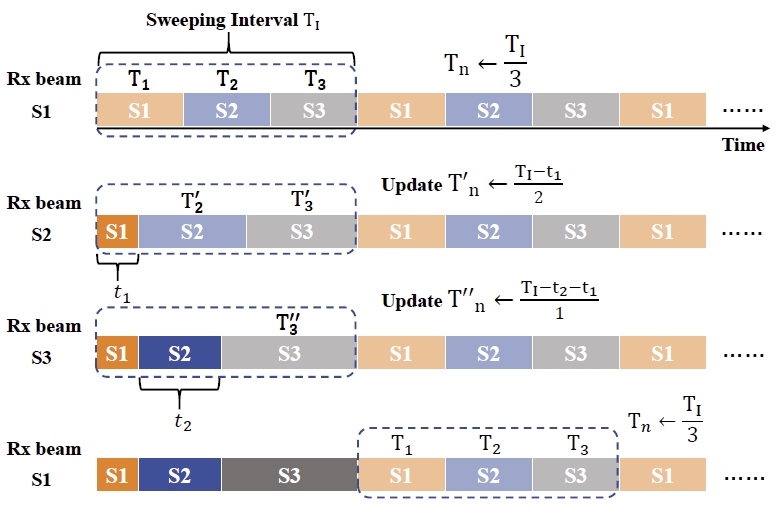Side-lobe Can Know More: Towards Simultaneous Communication and Sensing for mmWave


Thanks to the wide bandwidth, large antenna array, and short wavelength, millimeter wave (mmWave) has superior performance in both communication and sensing. Thus, the integration of sensing and communication is a developing trend for the mmWave band. However, the directional transmission characteristics of the mmWave limits the sensing scope to a narrow sector. Existing works coordinate sensing and communication in a time-division manner, which takes advantage of the sector level sweep during the beam training interval for sensing and the data transmission interval for communication. Beam training is a low frequency (e.g., 10Hz) and low duty-cycle event, which makes it hard to track fast movement or perform continuous sensing. Such time-division designs imply that we need to strike a balance between sensing and communication, and it is hard to get the best of both worlds. In this paper, we try to solve this dilemma by exploiting side lobes for sensing. We design Sidense, where the main lobe of the transmitter is directed towards the receiver, while in the meantime, the side lobes can sense the ongoing activities in the surrounding. In this way, sensing and downlink communication work simultaneously and will not compete for hardware and radio resources. In order to compensate for the low antenna gain of side lobes, Sidense performs integration to boost the quality of sensing signals. Due to the uneven side-lobe energy, Sidense also designs a target separation scheme to tackle the mutual interference in multi-target scenarios. We implement Sidense with Sivers mmWave module. Results show that Sidense can achieve millimeter motion tracking accuracy at 6m.We also demonstrate a multi-person respiration monitoring application. As Sidense does not modify the communication procedure or the beamforming strategy, the downlink communication performance will not be sacrificed due to concurrent sensing. We believe that more fascinating applications can be implemented on this concurrent sensing and communication platform.